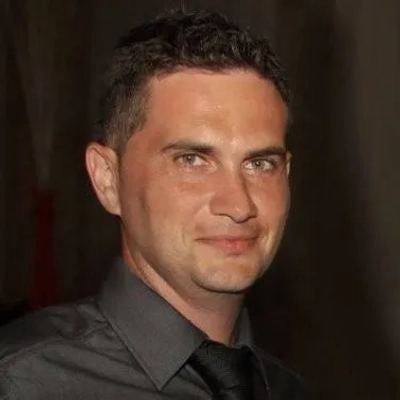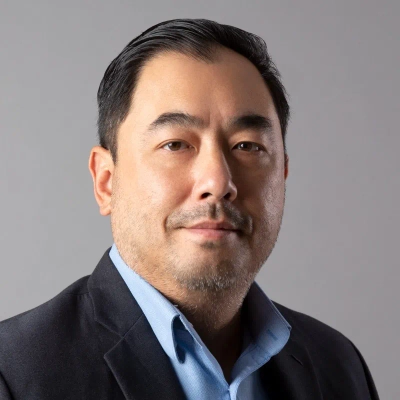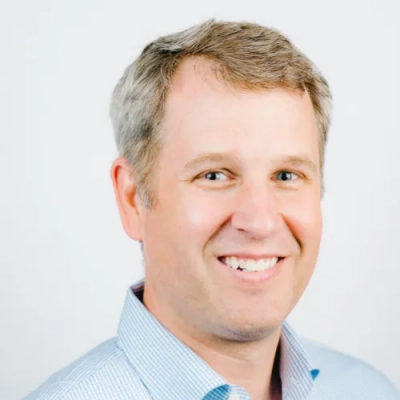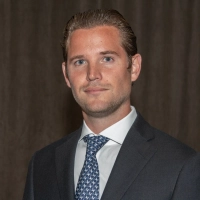Employee development has evolved beyond traditional top-down approaches, as this collection of 19 proven strategies demonstrates with insights from industry experts. These practical methods transform workplace dynamics by empowering team members to take ownership of their professional journey. From creating risk-free experimentation environments to implementing personalized skill enhancement programs, organizations can foster a culture where self-motivated growth naturally flourishes.
- Implement Personalized Skill Enhancement Programs
- Ask Questions Instead of Providing Answers
- Give Context and Trust Them to Decide
- Let Team Members Choose Their Passion Projects
- Create Ecosystems Where Trust Meets Clarity
- Provide Autonomous Professional Development Budgets
- Step Aside While Providing Implementation Guidance
- Make Long-Term Career Discussions Standard Practice
- Connect Goals to Outcomes for Independent Leadership
- Pair Junior Staff With Experienced Mentors
- Build Responsibility Ladders Through Service Work
- Develop Recognition Circles for Peer Celebration
- Trust Clinical Expertise Through Peer-Led Sessions
- Validate Educational Approaches Within Performance Boundaries
- Allow Personal Experience to Shape Healing Approaches
- Set Decision Limits With Quantifiable Standards
- Create Culture of Risk-Free Experimentation
- Assign Complete Projects From Start to Finish
- Share Financial Data to Build Business Partners
Implement Personalized Skill Enhancement Programs
At ALP Heating LTD., we believe that empowering our employees isn’t just about delegating tasks—it’s about fostering a culture of ownership, growth, and accountability. This approach not only enriches their professional development but also enhances the quality of service we provide to our clients across the Greater Toronto Area.
One successful strategy we’ve implemented is our “Skill Enhancement Program,” which encourages our team members to identify their personal and professional growth goals. During regular check-ins, we discuss these aspirations and tailor training opportunities that align with both their interests and our business needs. For instance, if a technician expresses interest in mastering smart thermostat installations, we facilitate specialized training sessions, ensuring they gain both the knowledge and confidence to excel in that area.
We also prioritize mentorship within our organization. Each employee is paired with a more experienced team member who acts as a guide, offering insights on technical challenges and sharing best practices. This relationship not only accelerates learning but also instills a sense of community, where knowledge is exchanged freely. As our CEO and founder, I’ve witnessed firsthand how this mentorship approach has transformed our team dynamics. New technicians often share that the guidance they’ve received has not only improved their skills but has also helped them feel valued and integral to our mission.
Moreover, we actively encourage innovation and idea sharing. We hold regular brainstorming sessions where employees can propose new service ideas or improvements to existing processes. This initiative has led to enhancements in our emergency response protocols, benefiting our clients by ensuring faster resolution times.
In essence, empowering our employees at ALP Heating isn’t merely about professional development; it’s about cultivating a supportive environment where everyone feels they have a stake in our success. As we say, “When our team thrives, our clients feel it.” This philosophy has not only driven individual growth but has also led to our recognition as an award-winning service provider, reinforcing our commitment to customer care and community-focused service.
By investing in our employees, we are ultimately investing in the future of ALP Heating and the satisfaction of our clients.

Ask Questions Instead of Providing Answers
One approach I’ve found highly effective in empowering employees is shifting from giving answers to asking better questions. Instead of stepping in with a solution every time someone hit a roadblock, I started asking, “How would you approach this?” or “What outcome do you want to see here?” It sounds simple, but it reframed the dynamic. Employees began to see themselves as problem-solvers, not just executors of instructions.
To reinforce this, we built in regular development check-ins where the agenda wasn’t performance review, but forward-looking growth. Employees set their own quarterly goals—professional or personal—and we provided resources or mentorship to support them. The responsibility for defining development stayed with them, while leadership acted as the enabler.
The outcome was powerful. People who once waited for direction began taking initiative, proposing new ideas, and even identifying inefficiencies we hadn’t noticed at the leadership level. Ownership became less about accountability and more about pride. When employees drive their own development, they’re not just motivated by KPIs—they’re motivated by a sense of purpose.
What I’ve learned is that empowerment isn’t about handing over the keys and walking away. It’s about creating an environment where people feel trusted to make decisions, supported when they stumble, and recognized when they succeed. That balance of autonomy and backing is what turns employees into leaders in their own right.

Give Context and Trust Them to Decide
One thing that’s worked really well for us at Carepatron is giving people full visibility and context, then getting out of their way. Ownership doesn’t come from micromanaging or handing out tasks. It comes from trusting people with the why and letting them figure out the how.
We run a pretty transparent environment. Everyone has access to our goals, product strategy, customer insights, all of it. When someone understands how their work ties into the bigger picture, they naturally start making smarter decisions and taking more initiative. It shifts the mindset from “I’m just doing my job” to “I’m helping build this thing.”
One successful approach we’ve used is what we call autonomous sprints. Instead of assigning work top down, we set clear outcomes and let teams or individuals pitch how they’ll hit those goals. They decide the path, the process, and what success looks like. We support them, but we don’t interfere unless they ask for help. It’s created a strong sense of ownership, and people are more invested in both their work and their growth.
The key is not just freedom. It’s freedom with clarity. Give people the right context and the space to grow, and most of the time they’ll surprise you in the best way.

Let Team Members Choose Their Passion Projects
One thing I’ve come to realize is that ownership doesn’t stem from a job title; it comes from allowing people to choose an area that matters to them and then giving them the freedom to run with it. At Legacy Online School, we implemented a straightforward practice that we do every quarter: each team member chooses an area they want to lead on—an area that they are passionate about improving and not just something that is handed to them.
For example, one of our support specialists was passionate about making onboarding easier for new families. He designed a new orientation flow, piloted it with parents, and shared the results with the team. Today, that’s the process we employ with every student who comes on board the program. No one told him to do it; he raised his hand, we trusted him, and we gave him the opportunity to try it.
The difference in ownership is night and day—people aren’t “doing tasks” anymore; they are searching for ways to leave a legacy; and when they see what they’ve done becoming a part of the school, it inspires their journey more than any course could offer them.
As a leader, my job is mostly to remove barriers and recognize the work. When people feel trusted enough to take risks and know their work has a visible impact within the workplace, that ownership defeats any formal suggestion.

Create Ecosystems Where Trust Meets Clarity
Empowerment begins where trust meets clarity. In my 20+ years of leading high-performing teams in the aesthetics and wellness industry, I’ve learned that people don’t just take ownership when they’re told to, they take ownership when they’re trusted to. My role as a leader is to create an ecosystem where that trust, alignment, and accountability can thrive.
At skinBe Med Spa, our approach starts with clarity of purpose. Every team member understands how their daily actions connect to our larger vision and mission: helping people live their best lives from the inside out. We don’t just hire for skill; we hire for alignment with our core LEADERS values: Level Up, Excellence, Achieve, Diversity, Empathy, Relationships, and Strength; because ownership is a mindset long before it’s a behavior.
Once that foundation is set, empowerment happens through intentional structure and ongoing development. We give each team member a “lane to lead” with an area of ownership tied directly to outcomes that matter. Our leadership team doesn’t micromanage; we mentor and empower our team. Weekly check-ins, collaborative brainstorming, and real-time feedback ensure they have both autonomy and support. When someone knows their voice matters, they show up differently – more confident, creative, and invested in results.
One successful approach that’s transformed our culture is the framework to empower our employees to own their role. It’s simple but powerful: every individual identifies measurable goals each month that elevate both their professional growth and the client experience. We track it, review progress with leadership, and celebrate wins collectively. This approach has turned development into a shared language – one rooted in excellence and evolution, not evaluation.
True leadership isn’t about control; it’s about cultivation. Empowered employees don’t just execute, they innovate. When people feel seen, safe, and supported, they don’t wait to be told what’s next; they create it. That’s how we scale not just success, but significance while empowering our team to take great pride in their work.

Provide Autonomous Professional Development Budgets
We implemented “ownership budgets” where each team member receives an annual allocation they can spend on any professional development, tools, or process improvements they believe will enhance their work – no approval required, just quarterly reporting on outcomes and lessons learned.
The program started when I noticed that our top performers were consistently asking for resources or training that our traditional approval process was too slow to accommodate. Instead of bureaucratic requests, I gave everyone a $2,500 annual budget with complete autonomy over how to invest it in their professional growth.
The results transformed both individual performance and company culture. Employee engagement scores increased 38% within the first year, but more importantly, productivity improvements averaged 23% across all departments. People became genuinely invested in finding solutions rather than waiting for management to provide them.
What made this approach particularly successful was the quarterly sharing sessions where team members presented what they learned or implemented with their budgets. A customer service representative used her allocation for conflict resolution training and reduced complaint escalations by 31%. Our developer invested in advanced automation tools that saved the entire team 6 hours weekly.
The psychological shift was profound. Instead of asking permission to grow professionally, employees started proactively identifying opportunities to add value. They stopped seeing professional development as something the company owed them and started viewing it as an investment they controlled.
The key insight was that ownership mentality emerges when people have real decision-making authority over resources that affect their daily work. Traditional development programs feel like benefits granted by management, but ownership budgets feel like tools for personal empowerment.
The approach also created a culture of continuous learning where sharing knowledge became natural rather than mandated, because people were excited about their discoveries and wanted recognition for their smart investments.

Step Aside While Providing Implementation Guidance
Orthodontics has shown me that people become more invested in their work when they receive direct involvement in the process. The team at Kunik Orthodontics began running their own “comfort improvement” initiatives, which I allowed them to lead. The team develops their own solutions for patient comfort during extended procedures while I provide guidance to enhance their planning process. The initiative focuses on implementing minor improvements which create tangible results. The implementation of their proposed ideas leads patients to demonstrate increased interest in treatment results and learning new skills.
Our clinical assistants developed the “Comfort First” checklist for extensive treatments, which became a prime example of their work. The entire process belonged to them because I stayed completely out of their way. The patients, along with the team members, took notice of the changes. The team members began sharing their experiences about successful and unsuccessful methods, which resulted in an immediate boost of confidence among them. The experience taught me that empowerment requires stepping aside from people’s work instead of granting them permission to take control.

Make Long-Term Career Discussions Standard Practice
CEOs and senior leaders must empower their staff to take ownership of their work and drive their own professional development. Staff who are encouraged to be strategic about their career won’t wait passively for something to happen to them; they will proactively seek out opportunities that will help propel them to the future positions and roles that they desire. One approach to creating a culture where staff drive their own development is to make mid- to long-term career conversations a part of each employee’s development conversations.
In performance reviews, make sure that supervisors are asking staff not just about what is happening now, but where they would like to be in five years. What skills will they need for that next role? What opportunities exist now in which they can work on enhancing those skills? What opportunities must they create or seek out?
It is also important for leaders and managers to continuously tie the learning from the day-to-day work to the employee’s goals. After a project is complete, ask an employee what they learned from the experience and what they may do differently in the future. Ask them how what they learned might be useful in their future role.
It is important to recognize that to truly create a culture where employees are driving their own professional development, leaders must be open to goals and roles that may exist outside of the current organization. If a leader does not give an employee the opportunity to discuss and choose something outside of the organization, then that employee has also not been given the choice to recommit and stay with the current employer. Staff are highly engaged when they are able to discuss their full career goals with transparency. In this environment of trust, leaders will also have critical insight into how to retain top talent by creating the learning and growth opportunities that employees are seeking. If an employee does choose to leave, the employer will not be caught off guard and can implement a thoughtful plan for succession.

Connect Goals to Outcomes for Independent Leadership
The process of empowerment emerges through the connection between organizational goals and performance targets. The department heads at Paramount Wellness Retreat establish quarterly targets which directly enhance patient experience quality. The team members develop their own plans, establish performance indicators, and execute the plans under their leadership. The system provides team members with freedom to work independently while maintaining their accountability to specific tasks. People will take initiative when they grasp the fundamental reason behind their tasks.
The system enables team members to take charge of results instead of following assigned tasks. The admissions team independently transformed our intake procedures, which resulted in a 40% decrease in client waiting times. The team’s successful initiative created a chain reaction of self-initiated improvements throughout all departments, which demonstrated to staff members how they could drive change independently. The staff members who were previously unassertive now solve problems creatively because they recognize their leadership potential. Our organization underwent a complete cultural transformation when we moved from following rules to making personal commitments.

Pair Junior Staff With Experienced Mentors
The best approach to empower your employees is to take ownership of their work and drive their professional development by implementing a mentorship program. At my own firm, InCorp Vietnam, we understand the importance of this; that’s why we pair junior employees with experienced team members, which fosters a culture of learning and growth. Through regular one-on-one sessions, mentors provide guidance, feedback, and resources to help their mentees succeed. This boosts engagement, accountability, and job satisfaction, leading to higher productivity. In fact, Gallup reports that strong mentorship programs can increase employee engagement by 14% and improve retention by 55%.

Build Responsibility Ladders Through Service Work
The core value of Synergy includes ownership as its fundamental principle. I explain to my team that recovery and leadership require people to take action. The “responsibility ladders” at Synergy allow residents and staff members to advance their leadership skills through activities like peer mentoring, event organization, and workshop facilitation. People develop greater self-assurance through the process of discovering their ability to guide others through service work. People learn empowerment through practical experience instead of watching others perform tasks.
The development of their life purpose becomes more pronounced when staff members take on new responsibilities. The staff member who started by planning community meetings now leads our outreach division. People develop their complete potential by receiving leadership opportunities even when they demonstrate insufficient readiness. The organization maintains momentum and humility through continuous repetition of this process. People learn ownership through direct experience rather than classroom instruction.

Develop Recognition Circles for Peer Celebration
I view ownership as an ecosystem where recognition, autonomy, and purpose converge powerfully. Employees must feel their efforts are noticed, their autonomy respected, and their purpose aligned. Without this triad, development risks becoming mechanical rather than transformative. By nurturing all three, I have seen employees embrace challenges with genuine enthusiasm. Ownership then becomes a natural extension of meaningful participation.
One successful approach is creating recognition circles where peers celebrate each other’s contributions publicly. This fosters accountability while reinforcing the value of individual impact on collective success. Employees become inspired to invest further in their roles, driving their own growth. Recognition not only motivates but also powerfully validates professional identity. These circles have become anchors for sustained ownership and continual development.

Trust Clinical Expertise Through Peer-Led Sessions
The practice of humility requires empowerment to function effectively as a system. Staff members at Ascendant NY receive encouragement to work with patients as equal partners who help develop treatment plans instead of following established protocols. Staff counselors receive permission to modify their methods while staying within our established ethical boundaries. The level of trust between staff members creates equal amounts of responsibility and creative freedom. Leadership demonstrates its appreciation for clinical expertise, which leads to a complete transformation of employee motivation levels.
The organization uses peer-led “case reflection” sessions as an effective approach that lets junior clinicians share their unique challenges for group discussion leadership. The process enables them to develop their clinical skills while building their self-assurance through leadership roles. The process demonstrates to participants that their opinions matter regardless of their position level within the organization. The sessions have developed into mentorship development spaces throughout their evolution. Leadership has given me the most satisfying experience through observing team members evolve from asking for guidance to providing guidance to others.

Validate Educational Approaches Within Performance Boundaries
The foundation of empowerment begins when individuals take full responsibility for their knowledge. The counselors at InGenius Prep receive freedom to create and validate educational approaches for their students. Our organization follows a “teach your way” approach which operates within defined performance boundaries. The freedom to make decisions keeps our educational content both innovative and suitable for our students. Our academic space has evolved into an active research facility through which we develop new educational approaches.
The advisor created a mentorship system from her Ivy League background which produced significant positive results for students. When you allow team members to work on initiatives that match their abilities, you create both innovative solutions and enduring career satisfaction. The former silent staff members now deliver presentations at educational conferences. People achieve their greatest development when they experience the role of creators instead of workers. Expertise becomes visible and receives proper recognition when we empower others according to my definition.

Allow Personal Experience to Shape Healing Approaches
I use my personal background and emotional understanding to help others. My experience as an Ocean Recovery client taught me that trust development plays a crucial role in personal growth. Staff members receive the freedom to create sections of group therapy content through their individual strengths, which helps them develop ownership of their roles. Staff members create authentic connections with others when they share their personal experiences during their work activities. Our clinical environment has transformed into a more human-centered space because staff members have the freedom to work without strict procedures.
The music therapy program she developed at our center turned out to be our most successful program. The development of her program into a fundamental program element demonstrated that staff members achieve professional growth through pursuing their passions rather than following established rules. The successful initiative motivated staff members to explore new approaches beyond conventional clinical practices. Our organization developed a healing environment that combines innovative practices with compassionate care through time. Our organization defines empowerment through the practice of allowing each person to express their unique approach to healing.

Set Decision Limits With Quantifiable Standards
I set certain decision-making limits that leave employees with particular aspects of their work. They do not have to seek approvals at every turn but rather make decisions that directly impact client care or operations with results quantified against definite standards. This helps to avoid the stagnation that occurs when all decisions have to be approved by a manager and gives them real ownership in real time.
I also send staff on rotation on projects that are not part of their normal duties for a period of two to three weeks. A care coordinator can schedule dozens of patients or handle logistics for dozens of teams, which challenges his or her capabilities despite being supervised. Such opportunities create confidence and pragmatic development, which cannot be imparted in a classroom, and workers transfer such benefits to their routine activities.

Create Culture of Risk-Free Experimentation
To genuinely empower my employees, I believe in creating a culture of experimentation and risk-taking in a calculated manner. When I enable team members to test new ideas without worrying they will fail or be judged, they will take ownership. I start brainstorming exercises by having followers submit ideas, no matter how ridiculous they seem. In addition to creating freedom to be creative, it sends a clear message that I am listening and value their ideas. If my employees see that an idea leads to a fluctuation, or a new idea that could have a positive impact on the project, that is all it takes to get their buy-in.

Assign Complete Projects From Start to Finish
As a game manufacturing business owner, I’ve found that giving employees real responsibility early on is the best way to spark ownership. For example, letting someone lead a small production project from start to finish. They grow faster when they know the outcome depends on them, and that confidence carries into future development.

Share Financial Data to Build Business Partners
The foundation of empowering ownership begins with providing complete information to employees. I provide department heads at Soba New Jersey with complete financial and operational data each month, which helps them understand their decisions’ impact on company profits. The moment they view financial data, they begin to investigate ways to enhance operational efficiency and maximize value. The discussions serve as chances for staff members to shape company direction instead of being treated as audits. The practice of open financial disclosure creates trust and internal accountability over time.
The moment employees view financial data, they start to function as business partners instead of regular staff members. Managers who receive savings from their efficiency improvements can use this money to fund staff development programs through an autonomous decision-making process. The practice of cost-consciousness evolved into creative leadership when employees started actively searching for methods to enhance both care quality and business profitability. The savings of team members enabled them to attend external certification programs, which resulted in better operational systems when they returned to work. People will naturally develop ownership behavior when they receive direct rewards from their work achievements.


